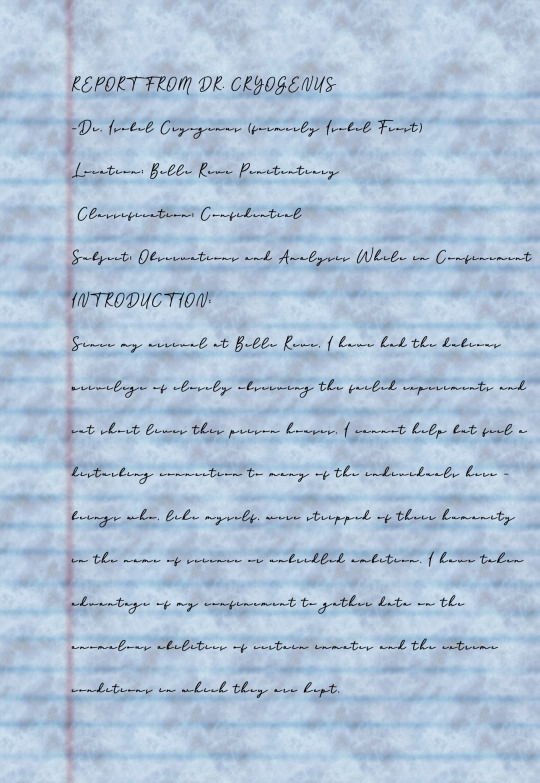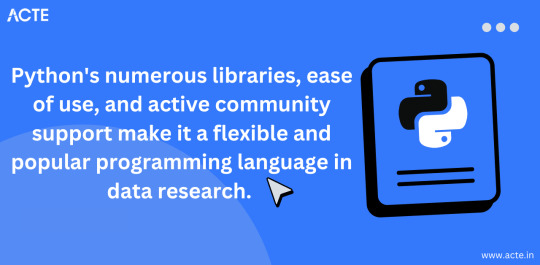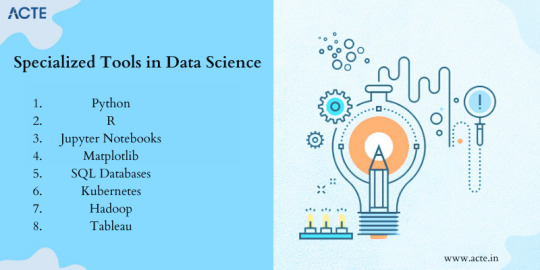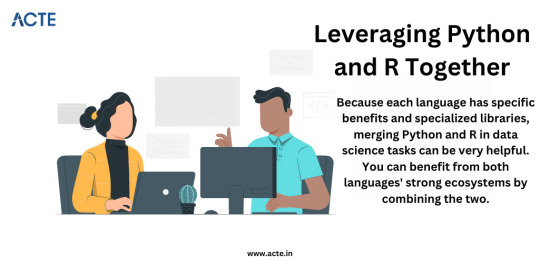#data science program advantages
Explore tagged Tumblr posts
Text
Linguists deal with two kinds of theories or models.
First, you have grammars. A grammar, in this sense, is a model of an individual natural language: what sorts of utterances occur in that language? When are they used and what do they mean? Even assembling this sort of model in full is a Herculean task, but we are fairly successful at modeling sub-systems of individual languages: what sounds occur in the language, and how may they be ordered and combined?—this is phonology. What strings of words occur in the language, and what strings don't, irrespective of what they mean?—this is syntax. Characterizing these things, for a particular language, is largely tractable. A grammar (a model of the utterances of a single language) is falsified if it predicts utterances that do not occur, or fails to predict utterances that do occur. These situations are called "overgeneration" and "undergeneration", respectively. One of the advantages linguistics has as a science is that we have both massive corpora of observational data (text that people have written, databases of recorded phone calls), and access to cheap and easy experimental data (you can ask people to say things in the target language—you have to be a bit careful about how you do this—and see if what they say accords with your model). We have to make some spherical cow type assumptions, we have to "ignore friction" sometimes (friction is most often what the Chomskyans call "performance error", which you do not have to be a Chomskyan to believe in, but I digress). In any case, this lets us build robust, useful, highly predictive, and falsifiable, although necessarily incomplete, models of individual natural languages. These are called descriptive grammars.
Descriptive grammars often have a strong formal component—Chomsky, for all his faults, recognized that both phonology and syntax could be well described by formal grammars in the sense of mathematics and computer science, and these tools have been tremendously productive since the 60s in producing good models of natural language. I believe Chomsky's program sensu stricto is a dead end, but the basic insight that human language can be thought about formally in this way has been extremely useful and has transformed the field for the better. Read any descriptive grammar, of a language from Europe or Papua or the Amazon, and you will see (in linguists' own idiosyncratic notation) a flurry regexes and syntax trees (this is a bit unfair—the computer scientists stole syntax trees from us, also via Chomsky) and string rewrite rules and so on and so forth. Some of this preceded Chomsky but more than anyone else he gave it legs.
Anyway, linguists are also interested in another kind of model, which confusingly enough we call simply a "theory". So you have "grammars", which are theories of individual natural languages, and you have "theories", which are theories of grammars. A linguistic theory is a model which predicts what sorts of grammar are possible for a human language to have. This generally comes in the form of making claims about
the structure of the cognitive faculty for language, and its limitations
the pathways by which language evolves over time, and the grammars that are therefore attractors and repellers in this dynamical system.
Both of these avenues of research have seen some limited success, but linguistics as a field is far worse at producing theories of this sort than it is at producing grammars.
Capital-G Generativism, Chomsky's program, is one such attempt to produce a theory of human language, and it has not worked very well at all. Chomsky's adherents will say it has worked very well—they are wrong and everybody else thinks they are very wrong, but Chomsky has more clout in linguistics than anyone else so they get to publish in serious journals and whatnot. For an analogy that will be familiar to physics people: Chomskyans are string theorists. And they have discovered some stuff! We know about wh-islands thanks to Generativism, and we probably would not have discovered them otherwise. Wh-islands are weird! It's a good thing the Chomskyans found wh-islands, and a few other bits and pieces like that. But Generativism as a program has, I believe, hit a dead end and will not be recovering.
Right, Generativism is sort of, kind of attempting to do (1), poorly. There are other people attempting to do (1) more robustly, but I don't know much about it. It's probably important. For my own part I think (2) has a lot of promise, because we already have a fairly detailed understanding of how language changes over time, at least as regards phonology. Some people are already working on this sort of program, and there's a lot of work left to be done, but I do think it's promising.
Someone said to me, recently-ish, that the success of LLMs spells doom for descriptive linguistics. "Look, that model does better than any of your grammars of English at producing English sentences! You've been thoroughly outclassed!". But I don't think this is true at all. Linguists aren't confused about which English sentences are valid—many of us are native English speakers, and could simply tell you ourselves without the help of an LLM. We're confused about why. We're trying to distill the patterns of English grammar, known implicitly to every English speaker, into explicit rules that tell us something explanatory about how English works. An LLM is basically just another English speaker we can query for data, except worse, because instead of a human mind speaking a human language (our object of study) it's a simulacrum of such.
Uh, for another physics analogy: suppose someone came along with a black box, and this black box had within it (by magic) a database of every possible history of the universe. You input a world-state, and it returns a list of all the future histories that could follow on from this world state. If the universe is deterministic, there should only be one of them; if not maybe there are multiple. If the universe is probabilistic, suppose the machine also gives you a probability for each future history. If you input the state of a local patch of spacetime, the machine gives you all histories in which that local patch exists and how they evolve.
Now, given this machine, I've got a theory of everything for you. My theory is: whatever the machine says is going to happen at time t is what will happen at time t. Now, I don't doubt that that's a very useful thing! Most physicists would probably love to have this machine! But I do not think my theory of everything, despite being extremely predictive, is a very good one. Why? Because it doesn't tell you anything, it doesn't identify any patterns in the way the natural world works, it just says "ask the black box and then believe it". Well, sure. But then you might get curious and want to ask: are there patterns in the black box's answers? Are there human-comprehensible rules which seem to characterize its output? Can I figure out what those are? And then, presto, you're doing good old regular physics again, as if you didn't even have the black box. The black box is just a way to run experiments faster and cheaper, to get at what you really want to know.
General Relativity, even though it has singularities, and it's incompatible with Quantum Mechanics, is better as a theory of physics than my black box theory of everything, because it actually identifies patterns, it gives you some insight into how the natural world behaves, in a way that you, a human, can understand.
In linguistics, we're in a similar situation with LLMs, only LLMs are a lot worse than the black box I've described—they still mess up and give weird answers from time to time. And more importantly, we already have a linguistic black box, we have billions of them: they're called human native speakers, and you can find one in your local corner store or dry cleaner. Querying the black box and trying to find patterns is what linguistics already is, that's what linguists do, and having another, less accurate black box does very little for us.
Now, there is one advantage that LLMs have. You can do interpretability research on LLMs, and figure out how they are doing what they are doing. Linguists and ML researchers are kind of in a similar boat here. In linguistics, well, we already all know how to talk, we just don't know how we know how to talk. In ML, you have these models that are very successful, buy you don't know why they work so well, how they're doing it. We have our own version of interpretability research, which is neuroscience and neurolinguistics. And ML researchers have interpretability research for LLMs, and it's very possible theirs progresses faster than ours! Now with the caveat that we can't expect LLMs to work just like the human brain, and we can't expect the internal grammar of a language inside an LLM to be identical to the one used implicitly by the human mind to produce native-speaker utterances, we still might get useful insights out of proper scrutiny of the innards of an LLM that speaks English very well. That's certainly possible!
But just having the LLM, does that make the work of descriptive linguistics obsolete? No, obviously not. To say so completely misunderstands what we are trying to do.
79 notes
·
View notes
Text
Unlocking the Power of Data: Essential Skills to Become a Data Scientist

In today's data-driven world, the demand for skilled data scientists is skyrocketing. These professionals are the key to transforming raw information into actionable insights, driving innovation and shaping business strategies. But what exactly does it take to become a data scientist? It's a multidisciplinary field, requiring a unique blend of technical prowess and analytical thinking. Let's break down the essential skills you'll need to embark on this exciting career path.
1. Strong Mathematical and Statistical Foundation:
At the heart of data science lies a deep understanding of mathematics and statistics. You'll need to grasp concepts like:
Linear Algebra and Calculus: Essential for understanding machine learning algorithms and optimizing models.
Probability and Statistics: Crucial for data analysis, hypothesis testing, and drawing meaningful conclusions from data.
2. Programming Proficiency (Python and/or R):
Data scientists are fluent in at least one, if not both, of the dominant programming languages in the field:
Python: Known for its readability and extensive libraries like Pandas, NumPy, Scikit-learn, and TensorFlow, making it ideal for data manipulation, analysis, and machine learning.
R: Specifically designed for statistical computing and graphics, R offers a rich ecosystem of packages for statistical modeling and visualization.
3. Data Wrangling and Preprocessing Skills:
Raw data is rarely clean and ready for analysis. A significant portion of a data scientist's time is spent on:
Data Cleaning: Handling missing values, outliers, and inconsistencies.
Data Transformation: Reshaping, merging, and aggregating data.
Feature Engineering: Creating new features from existing data to improve model performance.
4. Expertise in Databases and SQL:
Data often resides in databases. Proficiency in SQL (Structured Query Language) is essential for:
Extracting Data: Querying and retrieving data from various database systems.
Data Manipulation: Filtering, joining, and aggregating data within databases.
5. Machine Learning Mastery:
Machine learning is a core component of data science, enabling you to build models that learn from data and make predictions or classifications. Key areas include:
Supervised Learning: Regression, classification algorithms.
Unsupervised Learning: Clustering, dimensionality reduction.
Model Selection and Evaluation: Choosing the right algorithms and assessing their performance.
6. Data Visualization and Communication Skills:
Being able to effectively communicate your findings is just as important as the analysis itself. You'll need to:
Visualize Data: Create compelling charts and graphs to explore patterns and insights using libraries like Matplotlib, Seaborn (Python), or ggplot2 (R).
Tell Data Stories: Present your findings in a clear and concise manner that resonates with both technical and non-technical audiences.
7. Critical Thinking and Problem-Solving Abilities:
Data scientists are essentially problem solvers. You need to be able to:
Define Business Problems: Translate business challenges into data science questions.
Develop Analytical Frameworks: Structure your approach to solve complex problems.
Interpret Results: Draw meaningful conclusions and translate them into actionable recommendations.
8. Domain Knowledge (Optional but Highly Beneficial):
Having expertise in the specific industry or domain you're working in can give you a significant advantage. It helps you understand the context of the data and formulate more relevant questions.
9. Curiosity and a Growth Mindset:
The field of data science is constantly evolving. A genuine curiosity and a willingness to learn new technologies and techniques are crucial for long-term success.
10. Strong Communication and Collaboration Skills:
Data scientists often work in teams and need to collaborate effectively with engineers, business stakeholders, and other experts.
Kickstart Your Data Science Journey with Xaltius Academy's Data Science and AI Program:
Acquiring these skills can seem like a daunting task, but structured learning programs can provide a clear and effective path. Xaltius Academy's Data Science and AI Program is designed to equip you with the essential knowledge and practical experience to become a successful data scientist.
Key benefits of the program:
Comprehensive Curriculum: Covers all the core skills mentioned above, from foundational mathematics to advanced machine learning techniques.
Hands-on Projects: Provides practical experience working with real-world datasets and building a strong portfolio.
Expert Instructors: Learn from industry professionals with years of experience in data science and AI.
Career Support: Offers guidance and resources to help you launch your data science career.
Becoming a data scientist is a rewarding journey that blends technical expertise with analytical thinking. By focusing on developing these key skills and leveraging resources like Xaltius Academy's program, you can position yourself for a successful and impactful career in this in-demand field. The power of data is waiting to be unlocked – are you ready to take the challenge?
3 notes
·
View notes
Text
Manny Sherman dialogue transcribed
I really enjoyed transcribing the little hope puritan dialogue a bit ago despite it being one heck of an undertaking and I've always wanted to do a similar thing on a much smaller scale(this time) so as an afternoon task I pulled up a video of the four Sherman tapes and typed out his on screen dialogue, it'll be good for writing him and better understanding his vocabulary and maybe some time around I'll do something a little more substantial like Randolph Hodgson's journal but that aside I feel Sherman's dialogue flows really well and does a great job with characterisation, can you believe there's barely more than a thousand words from him all up? Regardless I've tried to follow the in game captions on the video which can be a little hard at times due to white text on a grey background with the occasional white detail obscuring stuff but I believe I got it at least 99% accurate and beyond that I added in places in brackets that he laughed but not the uncaptioned sounds of him getting his ass kicked because I thought one added something and the other wouldn't(and here's the video I used)
youtube
(interrogation - tape 1)
Manny Sherman. Born January one. Nineteen fifty-six.
Come on, you already know all this. What do you want?
What's this?… Huh… You've been doing your research, haven't you Special Agent Munday?
What are my favorite television programs?
Describe my first pet.
What were your friends like as a child?
What is this?!
You taking a survey or you trying to learn something?
Would it kill you to be direct?
You wanted to know what inspired me? As if I wasn't an original?
Well… maybe there was one man I found myself a little fascinated by.
Henry. Howard. Holmes.
Why? Because he was numero uno.
America's first. The guy invented the trade. He set the benchmark, you know?
Learn your history, Munday. Read a book.
You think because I stuck a blade in some people and get off on it I'm not smart?
I, heh… 'allegedly'… killed 13 people before you got smart enough to find me…
__
(interrogation - tape 2)
…had to build my own little castle, just like Holmes did.
Most people like me do their business where their target lives. That's just asking to get caught.
Holmes had the right idea. It was all about the honeytrap.
You bring me some smokes? Like I asked?
Lucky Reds? Yes! These are like gold in here. Damn that's good. So yeah, the honey pot.
Holmes built a hotel about a mile from the World's Fair and CALLED it the World's Fair Hotel and bought ad space in the papers alongside ads for the expo.
Rubes from far and wide assumed it was the official hotel!
Ma and Pa Kettle take a train in from Nebraska, takes three days, they roll up into that joint ready to rest, get to their room… and whoops— what do ya know… Holmes had a gas pipe hidden under the bed and poisons them.
Or maybe he pulls a trap door on them.
Maybe he separates them and makes one watch through a window while he slits the other's throat.
That's the advantage of a honey pot: no shortage of targets.
That's why I picked all those houses north of the airport.
That whole neighborhood was scheduled for demolition and yet…
All those lovely realtor ladies must not have gotten the memo.
Call up as a contractor, tell them I'm flipping, have them meet me out there… and look at that… we're the only two people for miles.
The first couple times I'd wait for a plane to fly over, just to hide their screams, but…
after a while I realized they could scream as loud as they wanted.
No one was gonna hear a thing.
That's what I remember most.
Those screams.
You can try to understand why I am the way I am. You can forensic science up all the data you want.
But you'll never know… You'll never know, Munday… You'll never really know how it feels when you watch the fire burn out of somebody.
__
(interrogation - tape 3)
(laughter)
A whole carton this time? You trying to get on my good side or something?
Think I'll save them.
What? No questions? What's going on with you, Munday?
You seem different.
(laughter) I see that that glimmer in your eye, you little devil.
I can keep secrets, man… we all have them.
That prosecutor is trying to get numbers out of me. Know that?
Of course you know that. Numbers. They got Holmes for 27… but we know he was closer to 200, right?
Can you imagine that? I wish I'd had the time to try and beat that.
Sure they know about those nice realtor ladies… they got families after all.
But the numbers the D.A. is asking me about… I think he knows there's some people out there— rejects… misfits… the kind of people that when you see them coming you look the other way.
Does anyone notice if they go missing?
My father always told me to leave my mark on the world.
I never knew what he meant by that— not until I watched that first girl bleed out.
I call it art. That's my signature on society.
It's not murder, it's an aesthetic response to what this world has made me.
Ask people to list killers, and they'll drop five, ten on you before they can't think of any more.
Ask them to name the detectives that caught those killers— no one is going to say a damn thing.
No one knows. No one cares.
No one makes movies about them.
No one puts their faces on t-shirts.
No one gives a shit.
(quiet chuckle)
I've left my mark on the world…
…have you?
__
(interrogation - tape 4)
You want to know what it means to be a killer?
You ever been to the art museum downtown?
They got this painting by a guy… forgot his name. Famous painter.
He did portraits of slaughtered cows hanging on hooks.
You take a normal person to a slaughterhouse and they will puke their guts out.
You make it into a painting and suddenly it's art.
There's no difference between the two. Not really.
Don't look at me like that. You know I'm right.
You get it. I know you get it.
You got to do something that matters. Make people feel something they've never felt before.
Shatter the illusion that any of us are really in control.
Think of the most profound thing you've ever done… the most beautiful thing you've ever created… and I promise you… it's nothing compared to watching the life bleed out of someone.
To see the fear in their eyes, to feel them pawing at you for release, to hear them pleading— begging…
That moment when someone realizes they are at their end…
That's when you feel it. That's true art.
That's what you have to be— an artist… a sculptor… an architect.
I see the gleam in your eye, Agent Munday, You're not fooling me.
Oh, look at you now, huh?
Am I going to be your first?
Well come on then— I'm right here.
This room is soundproof— you don't even have to wait for a plane to fly overhead.
There… There you are… I see you now.
Not bad… not bad at all.
Bare hands can feel good, huh?
But the blade makes for such a prettier picture.
You've got potential. Agent Munday…
If you truly want to be an artist.
__
@kassiekole22 @delurkr @ctrvpani @aydeenchan
@tinynightmarewoman @kindheartedgummybears @mybrainrotforreal (Know idea as ever with this character on who'd be interested in this but it was a good exercise at any rate)
#the devil in me#the dark pictures anthology#the dark pictures the devil in me#Manny Sherman#The beast of Arkansas#ramblings#supermassive games#Supermassi transcribed
14 notes
·
View notes
Text


Calypso!! My pretty pretty girl <3
Beautiful, loving, dangerous, she's one of the strongest bots on the island. She's extremely caring of and nurturing towards her friends, she loves them very, very much and will do anything to protect them. Anything. She can be quite terrifying when she's angry, it's a quiet yet deadly kind of fury. Despite her strength and destructive capabilities, she's normally very gentle and compassionate, especially towards her friends.
She's quite gourgeous and she knows it. She's been told she has a captivating gaze and she's willing to use that to her advantage when fiighting the Unknown. Despite leaning into her beauty, she has no interest in a relationship since her friends are all she needs.
She also loves flowers! In addition to her magical flower and vine powers, she just loves gardening and sharing information about her favorite flowers. She's been programmed with data on just about most flowers known to science and she loves it.
2 notes
·
View notes
Text
Mastering Data Structures: A Comprehensive Course for Beginners
Data structures are one of the foundational concepts in computer science and software development. Mastering data structures is essential for anyone looking to pursue a career in programming, software engineering, or computer science. This article will explore the importance of a Data Structure Course, what it covers, and how it can help you excel in coding challenges and interviews.
1. What Is a Data Structure Course?
A Data Structure Course teaches students about the various ways data can be organized, stored, and manipulated efficiently. These structures are crucial for solving complex problems and optimizing the performance of applications. The course generally covers theoretical concepts along with practical applications using programming languages like C++, Java, or Python.
By the end of the course, students will gain proficiency in selecting the right data structure for different problem types, improving their problem-solving abilities.
2. Why Take a Data Structure Course?
Learning data structures is vital for both beginners and experienced developers. Here are some key reasons to enroll in a Data Structure Course:
a) Essential for Coding Interviews
Companies like Google, Amazon, and Facebook focus heavily on data structures in their coding interviews. A solid understanding of data structures is essential to pass these interviews successfully. Employers assess your problem-solving skills, and your knowledge of data structures can set you apart from other candidates.
b) Improves Problem-Solving Skills
With the right data structure knowledge, you can solve real-world problems more efficiently. A well-designed data structure leads to faster algorithms, which is critical when handling large datasets or working on performance-sensitive applications.
c) Boosts Programming Competency
A good grasp of data structures makes coding more intuitive. Whether you are developing an app, building a website, or working on software tools, understanding how to work with different data structures will help you write clean and efficient code.
3. Key Topics Covered in a Data Structure Course
A Data Structure Course typically spans a range of topics designed to teach students how to use and implement different structures. Below are some key topics you will encounter:
a) Arrays and Linked Lists
Arrays are one of the most basic data structures. A Data Structure Course will teach you how to use arrays for storing and accessing data in contiguous memory locations. Linked lists, on the other hand, involve nodes that hold data and pointers to the next node. Students will learn the differences, advantages, and disadvantages of both structures.
b) Stacks and Queues
Stacks and queues are fundamental data structures used to store and retrieve data in a specific order. A Data Structure Course will cover the LIFO (Last In, First Out) principle for stacks and FIFO (First In, First Out) for queues, explaining their use in various algorithms and applications like web browsers and task scheduling.
c) Trees and Graphs
Trees and graphs are hierarchical structures used in organizing data. A Data Structure Course teaches how trees, such as binary trees, binary search trees (BST), and AVL trees, are used in organizing hierarchical data. Graphs are important for representing relationships between entities, such as in social networks, and are used in algorithms like Dijkstra's and BFS/DFS.
d) Hashing
Hashing is a technique used to convert a given key into an index in an array. A Data Structure Course will cover hash tables, hash maps, and collision resolution techniques, which are crucial for fast data retrieval and manipulation.
e) Sorting and Searching Algorithms
Sorting and searching are essential operations for working with data. A Data Structure Course provides a detailed study of algorithms like quicksort, merge sort, and binary search. Understanding these algorithms and how they interact with data structures can help you optimize solutions to various problems.
4. Practical Benefits of Enrolling in a Data Structure Course
a) Hands-on Experience
A Data Structure Course typically includes plenty of coding exercises, allowing students to implement data structures and algorithms from scratch. This hands-on experience is invaluable when applying concepts to real-world problems.
b) Critical Thinking and Efficiency
Data structures are all about optimizing efficiency. By learning the most effective ways to store and manipulate data, students improve their critical thinking skills, which are essential in programming. Selecting the right data structure for a problem can drastically reduce time and space complexity.
c) Better Understanding of Memory Management
Understanding how data is stored and accessed in memory is crucial for writing efficient code. A Data Structure Course will help you gain insights into memory management, pointers, and references, which are important concepts, especially in languages like C and C++.
5. Best Programming Languages for Data Structure Courses
While many programming languages can be used to teach data structures, some are particularly well-suited due to their memory management capabilities and ease of implementation. Some popular programming languages used in Data Structure Courses include:
C++: Offers low-level memory management and is perfect for teaching data structures.
Java: Widely used for teaching object-oriented principles and offers a rich set of libraries for implementing data structures.
Python: Known for its simplicity and ease of use, Python is great for beginners, though it may not offer the same level of control over memory as C++.
6. How to Choose the Right Data Structure Course?
Selecting the right Data Structure Course depends on several factors such as your learning goals, background, and preferred learning style. Consider the following when choosing:
a) Course Content and Curriculum
Make sure the course covers the topics you are interested in and aligns with your learning objectives. A comprehensive Data Structure Course should provide a balance between theory and practical coding exercises.
b) Instructor Expertise
Look for courses taught by experienced instructors who have a solid background in computer science and software development.
c) Course Reviews and Ratings
Reviews and ratings from other students can provide valuable insights into the course’s quality and how well it prepares you for real-world applications.
7. Conclusion: Unlock Your Coding Potential with a Data Structure Course
In conclusion, a Data Structure Course is an essential investment for anyone serious about pursuing a career in software development or computer science. It equips you with the tools and skills to optimize your code, solve problems more efficiently, and excel in technical interviews. Whether you're a beginner or looking to strengthen your existing knowledge, a well-structured course can help you unlock your full coding potential.
By mastering data structures, you are not only preparing for interviews but also becoming a better programmer who can tackle complex challenges with ease.
3 notes
·
View notes
Text
How Python Powers Scalable and Cost-Effective Cloud Solutions

Explore the role of Python in developing scalable and cost-effective cloud solutions. This guide covers Python's advantages in cloud computing, addresses potential challenges, and highlights real-world applications, providing insights into leveraging Python for efficient cloud development.
Introduction
In today's rapidly evolving digital landscape, businesses are increasingly leveraging cloud computing to enhance scalability, optimize costs, and drive innovation. Among the myriad of programming languages available, Python has emerged as a preferred choice for developing robust cloud solutions. Its simplicity, versatility, and extensive library support make it an ideal candidate for cloud-based applications.
In this comprehensive guide, we will delve into how Python empowers scalable and cost-effective cloud solutions, explore its advantages, address potential challenges, and highlight real-world applications.
Why Python is the Preferred Choice for Cloud Computing?
Python's popularity in cloud computing is driven by several factors, making it the preferred language for developing and managing cloud solutions. Here are some key reasons why Python stands out:
Simplicity and Readability: Python's clean and straightforward syntax allows developers to write and maintain code efficiently, reducing development time and costs.
Extensive Library Support: Python offers a rich set of libraries and frameworks like Django, Flask, and FastAPI for building cloud applications.
Seamless Integration with Cloud Services: Python is well-supported across major cloud platforms like AWS, Azure, and Google Cloud.
Automation and DevOps Friendly: Python supports infrastructure automation with tools like Ansible, Terraform, and Boto3.
Strong Community and Enterprise Adoption: Python has a massive global community that continuously improves and innovates cloud-related solutions.
How Python Enables Scalable Cloud Solutions?
Scalability is a critical factor in cloud computing, and Python provides multiple ways to achieve it:
1. Automation of Cloud Infrastructure
Python's compatibility with cloud service provider SDKs, such as AWS Boto3, Azure SDK for Python, and Google Cloud Client Library, enables developers to automate the provisioning and management of cloud resources efficiently.
2. Containerization and Orchestration
Python integrates seamlessly with Docker and Kubernetes, enabling businesses to deploy scalable containerized applications efficiently.
3. Cloud-Native Development
Frameworks like Flask, Django, and FastAPI support microservices architecture, allowing businesses to develop lightweight, scalable cloud applications.
4. Serverless Computing
Python's support for serverless platforms, including AWS Lambda, Azure Functions, and Google Cloud Functions, allows developers to build applications that automatically scale in response to demand, optimizing resource utilization and cost.
5. AI and Big Data Scalability
Python’s dominance in AI and data science makes it an ideal choice for cloud-based AI/ML services like AWS SageMaker, Google AI, and Azure Machine Learning.
Looking for expert Python developers to build scalable cloud solutions? Hire Python Developers now!
Advantages of Using Python for Cloud Computing
Cost Efficiency: Python’s compatibility with serverless computing and auto-scaling strategies minimizes cloud costs.
Faster Development: Python’s simplicity accelerates cloud application development, reducing time-to-market.
Cross-Platform Compatibility: Python runs seamlessly across different cloud platforms.
Security and Reliability: Python-based security tools help in encryption, authentication, and cloud monitoring.
Strong Community Support: Python developers worldwide contribute to continuous improvements, making it future-proof.
Challenges and Considerations
While Python offers many benefits, there are some challenges to consider:
Performance Limitations: Python is an interpreted language, which may not be as fast as compiled languages like Java or C++.
Memory Consumption: Python applications might require optimization to handle large-scale cloud workloads efficiently.
Learning Curve for Beginners: Though Python is simple, mastering cloud-specific frameworks requires time and expertise.
Python Libraries and Tools for Cloud Computing
Python’s ecosystem includes powerful libraries and tools tailored for cloud computing, such as:
Boto3: AWS SDK for Python, used for cloud automation.
Google Cloud Client Library: Helps interact with Google Cloud services.
Azure SDK for Python: Enables seamless integration with Microsoft Azure.
Apache Libcloud: Provides a unified interface for multiple cloud providers.
PyCaret: Simplifies machine learning deployment in cloud environments.
Real-World Applications of Python in Cloud Computing
1. Netflix - Scalable Streaming with Python
Netflix extensively uses Python for automation, data analysis, and managing cloud infrastructure, enabling seamless content delivery to millions of users.
2. Spotify - Cloud-Based Music Streaming
Spotify leverages Python for big data processing, recommendation algorithms, and cloud automation, ensuring high availability and scalability.
3. Reddit - Handling Massive Traffic
Reddit uses Python and AWS cloud solutions to manage heavy traffic while optimizing server costs efficiently.
Future of Python in Cloud Computing
The future of Python in cloud computing looks promising with emerging trends such as:
AI-Driven Cloud Automation: Python-powered AI and machine learning will drive intelligent cloud automation.
Edge Computing: Python will play a crucial role in processing data at the edge for IoT and real-time applications.
Hybrid and Multi-Cloud Strategies: Python’s flexibility will enable seamless integration across multiple cloud platforms.
Increased Adoption of Serverless Computing: More enterprises will adopt Python for cost-effective serverless applications.
Conclusion
Python's simplicity, versatility, and robust ecosystem make it a powerful tool for developing scalable and cost-effective cloud solutions. By leveraging Python's capabilities, businesses can enhance their cloud applications' performance, flexibility, and efficiency.
Ready to harness the power of Python for your cloud solutions? Explore our Python Development Services to discover how we can assist you in building scalable and efficient cloud applications.
FAQs
1. Why is Python used in cloud computing?
Python is widely used in cloud computing due to its simplicity, extensive libraries, and seamless integration with cloud platforms like AWS, Google Cloud, and Azure.
2. Is Python good for serverless computing?
Yes! Python works efficiently in serverless environments like AWS Lambda, Azure Functions, and Google Cloud Functions, making it an ideal choice for cost-effective, auto-scaling applications.
3. Which companies use Python for cloud solutions?
Major companies like Netflix, Spotify, Dropbox, and Reddit use Python for cloud automation, AI, and scalable infrastructure management.
4. How does Python help with cloud security?
Python offers robust security libraries like PyCryptodome and OpenSSL, enabling encryption, authentication, and cloud monitoring for secure cloud applications.
5. Can Python handle big data in the cloud?
Yes! Python supports big data processing with tools like Apache Spark, Pandas, and NumPy, making it suitable for data-driven cloud applications.
#Python development company#Python in Cloud Computing#Hire Python Developers#Python for Multi-Cloud Environments
2 notes
·
View notes
Text
Why Teaching Kids Programming is Essential for Their Future
In today’s rapidly advancing digital world, programming has become an essential skill, much like reading and writing. As technology continues to shape our lives, the ability to code is no longer limited to computer scientists and software engineers—it has become a fundamental skill for everyone. Teaching children programming at an early age not only prepares them for future careers but also nurtures essential cognitive and social skills.With the rise of educational platforms like id.alg.academy, learning to code has never been more accessible. This innovative platform empowers children with the knowledge and tools to explore coding engagingly and interactively, laying the foundation for a future filled with limitless opportunities.The Main Benefits of Teaching Children Programming1. Critical Thinking and Problem-SolvingOne of the most significant advantages of learning to code is the development of critical thinking and problem-solving skills. Programming challenges children to break down complex problems into smaller, manageable steps—a process known as decomposition. By writing code, debugging errors, and refining solutions, kids learn how to think logically and develop solutions methodically.For example, coding a simple game requires structuring commands in a logical sequence. If an error occurs, children must analyze what went wrong and troubleshoot the problem, sharpening their analytical thinking abilities. This logical approach extends beyond programming and applies to various real-life situations, from mathematics to decision-making skills.2. Creativity and InnovationCoding is not just about logic and algorithms—it is also an incredible tool for fostering creativity and innovation. When children learn to program, they gain the power to create their own games, animations, and interactive stories. This encourages them to think outside the box and develop unique solutions to challenges.Platforms like id.alg.academy provide a structured yet open-ended learning environment, allowing kids to experiment with different ideas and bring their imaginations to life. Whether designing an app, developing a robot, or creating a digital artwork, coding enables children to become creators rather than passive consumers of technology.3. Career Opportunities in Technology and BeyondThe demand for skilled programmers is growing at an exponential rate. From artificial intelligence and cybersecurity to web development and data science, programming skills are a gateway to numerous career paths. However, even outside the tech industry, coding knowledge is becoming a valuable asset in fields like finance, healthcare, and engineering.By introducing children to programming early, parents and educators give them a competitive edge in the job market. Learning platforms such as id.alg.academy make coding approachable, ensuring that children develop a solid foundation that can evolve into professional expertise in the future.
2 notes
·
View notes
Text
Exploring DeepSeek and the Best AI Certifications to Boost Your Career
Understanding DeepSeek: A Rising AI Powerhouse
DeepSeek is an emerging player in the artificial intelligence (AI) landscape, specializing in large language models (LLMs) and cutting-edge AI research. As a significant competitor to OpenAI, Google DeepMind, and Anthropic, DeepSeek is pushing the boundaries of AI by developing powerful models tailored for natural language processing, generative AI, and real-world business applications.
With the AI revolution reshaping industries, professionals and students alike must stay ahead by acquiring recognized certifications that validate their skills and knowledge in AI, machine learning, and data science.
Why AI Certifications Matter
AI certifications offer several advantages, such as:
Enhanced Career Opportunities: Certifications validate your expertise and make you more attractive to employers.
Skill Development: Structured courses ensure you gain hands-on experience with AI tools and frameworks.
Higher Salary Potential: AI professionals with recognized certifications often command higher salaries than non-certified peers.
Networking Opportunities: Many AI certification programs connect you with industry experts and like-minded professionals.
Top AI Certifications to Consider
If you are looking to break into AI or upskill, consider the following AI certifications:
1. AICerts – AI Certification Authority
AICerts is a recognized certification body specializing in AI, machine learning, and data science.
It offers industry-recognized credentials that validate your AI proficiency.
Suitable for both beginners and advanced professionals.
2. Google Professional Machine Learning Engineer
Offered by Google Cloud, this certification demonstrates expertise in designing, building, and productionizing machine learning models.
Best for those who work with TensorFlow and Google Cloud AI tools.
3. IBM AI Engineering Professional Certificate
Covers deep learning, machine learning, and AI concepts.
Hands-on projects with TensorFlow, PyTorch, and SciKit-Learn.
4. Microsoft Certified: Azure AI Engineer Associate
Designed for professionals using Azure AI services to develop AI solutions.
Covers cognitive services, machine learning models, and NLP applications.
5. DeepLearning.AI TensorFlow Developer Certificate
Best for those looking to specialize in TensorFlow-based AI development.
Ideal for deep learning practitioners.
6. AWS Certified Machine Learning – Specialty
Focuses on AI and ML applications in AWS environments.
Includes model tuning, data engineering, and deep learning concepts.
7. MIT Professional Certificate in Machine Learning & Artificial Intelligence
A rigorous program by MIT covering AI fundamentals, neural networks, and deep learning.
Ideal for professionals aiming for academic and research-based AI careers.
Choosing the Right AI Certification
Selecting the right certification depends on your career goals, experience level, and preferred AI ecosystem (Google Cloud, AWS, or Azure). If you are a beginner, starting with AICerts, IBM, or DeepLearning.AI is recommended. For professionals looking for specialization, cloud-based AI certifications like Google, AWS, or Microsoft are ideal.
With AI shaping the future, staying certified and skilled will give you a competitive edge in the job market. Invest in your learning today and take your AI career to the next leve
3 notes
·
View notes
Text
Why Tableau is Essential in Data Science: Transforming Raw Data into Insights

Data science is all about turning raw data into valuable insights. But numbers and statistics alone don’t tell the full story—they need to be visualized to make sense. That’s where Tableau comes in.
Tableau is a powerful tool that helps data scientists, analysts, and businesses see and understand data better. It simplifies complex datasets, making them interactive and easy to interpret. But with so many tools available, why is Tableau a must-have for data science? Let’s explore.
1. The Importance of Data Visualization in Data Science
Imagine you’re working with millions of data points from customer purchases, social media interactions, or financial transactions. Analyzing raw numbers manually would be overwhelming.
That’s why visualization is crucial in data science:
Identifies trends and patterns – Instead of sifting through spreadsheets, you can quickly spot trends in a visual format.
Makes complex data understandable – Graphs, heatmaps, and dashboards simplify the interpretation of large datasets.
Enhances decision-making – Stakeholders can easily grasp insights and make data-driven decisions faster.
Saves time and effort – Instead of writing lengthy reports, an interactive dashboard tells the story in seconds.
Without tools like Tableau, data science would be limited to experts who can code and run statistical models. With Tableau, insights become accessible to everyone—from data scientists to business executives.
2. Why Tableau Stands Out in Data Science
A. User-Friendly and Requires No Coding
One of the biggest advantages of Tableau is its drag-and-drop interface. Unlike Python or R, which require programming skills, Tableau allows users to create visualizations without writing a single line of code.
Even if you’re a beginner, you can:
✅ Upload data from multiple sources
✅ Create interactive dashboards in minutes
✅ Share insights with teams easily
This no-code approach makes Tableau ideal for both technical and non-technical professionals in data science.
B. Handles Large Datasets Efficiently
Data scientists often work with massive datasets—whether it’s financial transactions, customer behavior, or healthcare records. Traditional tools like Excel struggle with large volumes of data.
Tableau, on the other hand:
Can process millions of rows without slowing down
Optimizes performance using advanced data engine technology
Supports real-time data streaming for up-to-date analysis
This makes it a go-to tool for businesses that need fast, data-driven insights.
C. Connects with Multiple Data Sources
A major challenge in data science is bringing together data from different platforms. Tableau seamlessly integrates with a variety of sources, including:
Databases: MySQL, PostgreSQL, Microsoft SQL Server
Cloud platforms: AWS, Google BigQuery, Snowflake
Spreadsheets and APIs: Excel, Google Sheets, web-based data sources
This flexibility allows data scientists to combine datasets from multiple sources without needing complex SQL queries or scripts.
D. Real-Time Data Analysis
Industries like finance, healthcare, and e-commerce rely on real-time data to make quick decisions. Tableau’s live data connection allows users to:
Track stock market trends as they happen
Monitor website traffic and customer interactions in real time
Detect fraudulent transactions instantly
Instead of waiting for reports to be generated manually, Tableau delivers insights as events unfold.
E. Advanced Analytics Without Complexity
While Tableau is known for its visualizations, it also supports advanced analytics. You can:
Forecast trends based on historical data
Perform clustering and segmentation to identify patterns
Integrate with Python and R for machine learning and predictive modeling
This means data scientists can combine deep analytics with intuitive visualization, making Tableau a versatile tool.
3. How Tableau Helps Data Scientists in Real Life
Tableau has been adopted by the majority of industries to make data science more impactful and accessible. This is applied in the following real-life scenarios:
A. Analytics for Health Care
Tableau is deployed by hospitals and research institutions for the following purposes:
Monitor patient recovery rates and predict outbreaks of diseases
Analyze hospital occupancy and resource allocation
Identify trends in patient demographics and treatment results
B. Finance and Banking
Banks and investment firms rely on Tableau for the following purposes:
✅ Detect fraud by analyzing transaction patterns
✅ Track stock market fluctuations and make informed investment decisions
✅ Assess credit risk and loan performance
C. Marketing and Customer Insights
Companies use Tableau to:
✅ Track customer buying behavior and personalize recommendations
✅ Analyze social media engagement and campaign effectiveness
✅ Optimize ad spend by identifying high-performing channels
D. Retail and Supply Chain Management
Retailers leverage Tableau to:
✅ Forecast product demand and adjust inventory levels
✅ Identify regional sales trends and adjust marketing strategies
✅ Optimize supply chain logistics and reduce delivery delays
These applications show why Tableau is a must-have for data-driven decision-making.
4. Tableau vs. Other Data Visualization Tools
There are many visualization tools available, but Tableau consistently ranks as one of the best. Here’s why:
Tableau vs. Excel – Excel struggles with big data and lacks interactivity; Tableau handles large datasets effortlessly.
Tableau vs. Power BI – Power BI is great for Microsoft users, but Tableau offers more flexibility across different data sources.
Tableau vs. Python (Matplotlib, Seaborn) – Python libraries require coding skills, while Tableau simplifies visualization for all users.
This makes Tableau the go-to tool for both beginners and experienced professionals in data science.
5. Conclusion
Tableau has become an essential tool in data science because it simplifies data visualization, handles large datasets, and integrates seamlessly with various data sources. It enables professionals to analyze, interpret, and present data interactively, making insights accessible to everyone—from data scientists to business leaders.
If you’re looking to build a strong foundation in data science, learning Tableau is a smart career move. Many data science courses now include Tableau as a key skill, as companies increasingly demand professionals who can transform raw data into meaningful insights.
In a world where data is the driving force behind decision-making, Tableau ensures that the insights you uncover are not just accurate—but also clear, impactful, and easy to act upon.
#data science course#top data science course online#top data science institute online#artificial intelligence course#deepseek#tableau
3 notes
·
View notes
Text





REPORT FROM DR. CRYOGENUS
Dr. Evelyn Cryogenus (formerly Evelyn Frost)
Location: Belle Reve Penitentiary
Classification: Confidential
Subject: Observations and Analysis While in Confinement
INTRODUCTION: Since my arrival at Belle Reve, I have had the dubious privilege of closely observing the failed experiments and cut short lives this prison houses. I cannot help but feel a disturbing connection to many of the individuals here - beings who, like myself, were stripped of their humanity in the name of science or unbridled ambition. I have taken advantage of my confinement to gather data on the anomalous abilities of certain inmates and the extreme conditions in which they are kept.
SECTION 1 - CONTAINMENT OBSERVATIONS The Belle Reve system is designed to contain individuals with supernatural or anomalous abilities. However, I have noticed certain inefficiencies: Climate Controlled Cells: The cryogenic and extreme heat cells are not uniform. This proves dangerous for prisoners with temperature-based abilities. My own cell was not set up properly, allowing me to calibrate my control over temperature by allowing small amounts of cold to escape through cracks in the infrastructure. Inefficient Monitoring: The guards rely too heavily on outdated technology. I witnessed several inmates, including a subject named "Boltzmann," manipulate the electrical systems to create temporary blackouts.
SECTION 2: CLANDESTINE EXPERIMENTS Through interactions with other inmates and certain files I managed to decipher during an internal hacking attack, I have confirmed the continuation of clandestine experiments under the supervision of Amanda Waller. Genome Projects: Genetic experimentation on inmates without their consent. The Genome Project appears to be aimed at creating more stable hybrids between humans and metahumans. Cryogenic and Thermal Fusion: Apparently, my state and Phosphorus' were derived from an early program to manipulate extreme temperatures in humans. My analysis suggests there was a conscious design to test opposite interactions: heat and cold.
SECTION 3: PERSONAL DISCOVERIES While going through the archives of Belle Reve, I came across records relating to my and Alexander's (Doctor Phosphorus) transformation. Prior to our "evolution," we worked together in the same lab as researchers. In group photos, we were seen smiling, oblivious to the fate that awaited us. The discovery led me to reflect on how our abilities now work in symbiosis, as evidenced by our recent mission. Ironically, our opposing powers make us a complementary force, something we never understood when we were humans.
SECTION 4: CONCLUSION AND PROPOSAL Belle Reve is both a laboratory and a prison, a place where individuals are reduced to tools for unknown purposes. However, within this chaos, I have identified patterns that could be exploited for personal gain and, potentially, the release of other inmates. As a final note, my work with Phosphorus during missions is not just a matter of survival. It is proof that even in the loss of our humanity, we can find purpose and connection. I do not trust Waller's system or the Squad, but I intend to use their resources to obtain more answers and, perhaps, recover a part of what I lost. End of report.
SIGNED: Dr. Evelyn Cryogenus
4 notes
·
View notes
Text
Character Spotlight: Data
By Ames

It’s the man you’ve all been waiting for! He’s one of the most popular Star Trek characters of all time. He teaches us humanity and friendship and science. He’s the outsider character of his series and uses his unique perspective to open our eyes to the world and the people around us. And he loves cats! No wait, we already spotlighted Commander Spock. Just kidding. I’m, of course, talking about Lieutenant Commander Data!
It’s hard for us at A Star to Steer Her By to narrow down the best moments from our android friend because he gets to do so damn much between The Next Generation series and movies, and he’s also my personal favorite character on the show, but we’ve somehow managed it! So use your positronic brains to read on below and listen to our discussion on this week’s podcast episode (tricorder scan to 1:03:10) to see where we drew the line. Saddle up!
[Images © CBS/Paramount]
Best moments

You are fully functional, aren't you? As we mentioned in our Picard spotlight, “The Naked Now” has the strangest mix of great and terrible character moments, and I couldn’t not include the incredibly hot Data/Yar romance that it created. It’s just nice to know that Data is programmed in multiple techniques, a broad variety of pleasuring. And later, the physical acting we get from Brent Spiner in that lean and fall was great!

My thoughts are not for Tasha, but for myself While the rest of “Skin of Evil” and the anticlimactic death of Tasha Yar aren’t really our cups of tea, we do have to admit that the tribute scene at the end is moving and well done. And that final moment when Data and Picard talk (even so briefly!) about the point of the ceremony and how empty it will feel without Yar… I’m tearing up just thinking about it.

Tied game, we’re going into overtime I also have to give Data credit for all the times he uses his big android brain to solve a problem, an advantage he has over pretty much any other character. For example, when he busts Sirna Kolrami up in a game of strategema by forcing a constant stalemate in “Peak Performance,” it feels like a win because he thinks outside the fluorescent holographic box!

One android with a single weapon Every so often, we also see Data in command, questioning his leadership skills or having difficulty connecting with his peers (more on that one in a second). But when he’s the only one who can survive the radiation on Tau Cygna, he takes charge to get its colonists to leave by blowing up their aqueduct in “The Ensigns of Command.” Try withstanding Sheliak attacks now, losers!

Thank you for my life While some of us on SSHB didn’t care much for Lal, you’ve got to admit that all of Data’s actions in “The Offspring” are on point. From questioning why he shouldn’t be allowed to create life, to letting his offspring self-identify, to keeping her out of the hands of Starfleet, it’s all good parenting. But what takes the cake is the heart-wrenching farewell scene after he tries to save her.

He who dies with the most toys… is kind of an asshole While we don’t get the cathartic release of Data phasering the hell out of Kivas Fajo in “The Most Toys,” we do get to take some pride that he is capable of overcoming his ethical subprogram to do away with someone who really has no right existing. When Geordi says that he detects a phaser firing in the transporter beam, you know he just needed a fraction of a second more and Fajo would be toast.

Your request for reassignment has been noted and denied Like in the afore-mentioned “The Ensigns of Command,” Data has some trouble adjusting to command when he takes control of the Sutherland in “Redemption, Part II.” It sure doesn’t help that his racist XO Hobson undermines his every decision, but that doesn’t stop Data from single-handedly foiling the Romulans’ plan and telling Hobson exactly where to shove it.

I've never been to a better funeral When it’s apparent that Geordi has been killed in a transporter accident in “The Next Phase,” Data grapples with the loss of his best friend in a very touching way, similar to how he mourned Yar as we mentioned above. And before he solves the puzzle of the episode and saves them, Data throws the best funeral I’ve ever seen for La Forge and Ro! People are just dying for a funeral like that!

The most human decision you’ve ever made We gave Picard a lot of accolades when we discussed his standing up for Data’s right to live in “The Measure of a Man.” Data gets a similar moment in “The Quality of Life” when he refuses to trade the lives of the Exocomps for those of other beings. It’s a nice episode of paying it forward, and we also get to see the scientific method on high display when he and Crusher deduce the little guys are alive.

Radioactive. What does that mean? Speaking of the scientific method! Even with his memories wiped in “Thine Own Self,” Data is able to piece together why the radioactive materials are hurting everyone in the village on Barkon IV. And with that clear slate of mind, we see that in all forms, Data is curious, caring, and willing to help people who are in need, even if it gets him speared in the back a little bit.

Felis catus is your taxonomic nomenclature… We’d be remiss if we didn’t bring up Data’s beautiful relationship with his cat, Spot. As everyone on SSHB is a devoted cat person, we found it a treat whenever we saw Data interacting with Spot, testing which food she’d like, and writing cat poetry. The best might be when Data reunites with her after the Enterprise crashes in Generations AND he has the emotions to appreciate it!

Resistance is fully functional We noticed in our TOS spotlights that it’s in the movies that most characters get to shine, and First Contact is that chance for Data. His scenes getting tempted by the Borg Queen are dead sexy and you can’t tell me otherwise. And his betrayal of the Collective by purposely sparing the Phoenix and then fumigating engineering to kill Borg Queen are the climax we all needed. I’ll be in my bunk.
—
Worst moments

I am stuck Especially in the early seasons, Data got used to make bad fish-out-of-water jokes. It was a silly habit the show had of depicting him as naïve about human culture even though he’s lived in it for years (and has the memories of the Omicron Thetans when the show remembers). Seeing him get stuck in a fingertrap in “The Last Outpost” is just such an example of dumb sight gags to make him look goofy.

I can’t use contractions, sir This is just a pet peeve of mine that could have been fixed so damned easily. Listen, writers, if you’re going to make it a plot point that Data can’t use contractions in episodes like “Datalore” and “Future Imperfect,” then be consistent. Run an apostrophe search in Microsoft Word and replace them, because in episodes like “We’ll Always Have Paris” when he states “It’s me,” it pisses me off.

Take my Worf, please! Don’t worry, we’re not done pointing out all the bad jokes told at Data’s expense that we see throughout the series (oh god, and just wait for the movies). And it’s a shame because Brent Spiner himself has such great comic timing and delivery, but when you make his jokes so obviously idiotic like in Ames’s least favorite TNG episode “The Outrageous Okona,” we cringe so hard.

Is anybody out there? We mentioned this one in our prime directive chat before, since Data just tramples all over it, but “Pen Pals” has some good discussion on the pros and cons of the situation. But that doesn’t excuse Data for making the decision on his own to get involved with the Dramen people, much less to bring Sarjenka onto the bridge (for crying out loud), necessitating a Pulaski mind wipe!

One seven three four six seven three two one four… There are a handful of times in TNG that we find it a terrible idea that Data (or any single being) has as much power as they have, considering how often they get possessed by things or duplicated by other things. So when Data single-handedly takes over the Enterprise in “Brothers,” disrupting the mission to save Willie Potts’s life, because Soong hacked into his brain, we raise eyebrows.

Jilting by association While I could joke that Data ever introducing Miles and Keiko was a mistake (and I have!), there’re still a lot of bad moves he makes regarding their relationship in “Data’s Day.” When he gets stuck in the middle of their nuptial stress, he’s so clueless how to handle the situation and keeps making things worse when, frankly, Miles and Keiko should have kept things to themselves.

Who programmed the book of love? Moving on to even more lousy relationships: Data’s brief, unnecessary romance with Jenna Desora in “In Theory” proves to be just another example of too many “Data doesn’t understand humanity” jokes that we hoped the show was over by this point. But alas, he’s written himself a love program to basically treat the situation like a sitcom and we were done with it.

Point that thing somewhere else From the moment Data stands directly in front of Bashir’s mystery device in “Birthright, Part I,” it’s obvious he’s going to get zapped by it. Really, Data? You couldn’t have stood literally anywhere else than in front of what is clearly an energy beam? And the rest of the episode, we’re stuck going on a dream adventure, and you already know how I feel about those!

Stop it, stop it, stop it Like in “Brothers,” it just seems weird to have Data getting controlled by his kooky family members when it happens again in “Descent.” This time, Lore has given Data the emotions he thought he wanted all along, but it turns out the very first emotion Data embraces is sheer rage. When he takes pleasure in killing Borg, you know maybe emotions just aren’t for him, and yet…

Open sesame! …when we get to Generations, Data has a fully fledged emotion chip that really needed more testing first. We’re subjected to just way too many of those dopey Data jokes, from Open Sesame to Mr. Tricorder to cackling at a 7-year-old joke. And to add kidnapping and torture to insult, it’s when Data is having a particularly bad reaction that Geordi nearly gets killed by Klingons!

I have been designed to serve as a floatation device We’re not done yet with the Data humor (and just way too much humor in general that doesn’t land) in Insurrection. While this film really gives Jean-Luc his time to shine, the rest of the cast are treated like afterthoughts, including Data who seems to be around for punchlines, like remarking about how the women’s boobs feel firmer, and serving as a life preserver.

Going out in a blaze of failure Finally, I need to criticize Nemesis yet again, as I am wont to do. It’s just… Data’s sacrifice for Picard is so unearned. I’d debate that it’s worse than the Kirk sacrifice in Generations that we put in that Worst Moments list too. Most of it is probably the abysmal script. I’ll sum it up by saying this: if you can’t make me care that my favorite character died, you’ve done something wrong.
—
Now that we’ve found Data’s off switch, we can wrap things up this week. Don’t worry, we’ve got tons more character spotlights for the coming weeks, so keep your sensors here, journey over to SoundCloud or wherever you get your podcasts to follow along with our Enterprise watchthough, break the Prime Directive with us on Facebook and Twitter, and delete that comedian holoprogram from the computer!
#star trek#star trek podcast#podcast#data#the next generation#generations#first contact#insurrection#nemesis#the naked now#skin of evil#peak performance#the ensigns of command#the offspring#the most toys#redemption#the next phase#the quality of life#thine own self#the last outpost#we'll always have paris#the outrageous okona#pen pals#brothers#data's day#in theory#birthright#descent#brent spiner
13 notes
·
View notes
Text
Exploring Data Science Tools: My Adventures with Python, R, and More
Welcome to my data science journey! In this blog post, I'm excited to take you on a captivating adventure through the world of data science tools. We'll explore the significance of choosing the right tools and how they've shaped my path in this thrilling field.
Choosing the right tools in data science is akin to a chef selecting the finest ingredients for a culinary masterpiece. Each tool has its unique flavor and purpose, and understanding their nuances is key to becoming a proficient data scientist.
I. The Quest for the Right Tool
My journey began with confusion and curiosity. The world of data science tools was vast and intimidating. I questioned which programming language would be my trusted companion on this expedition. The importance of selecting the right tool soon became evident.
I embarked on a research quest, delving deep into the features and capabilities of various tools. Python and R emerged as the frontrunners, each with its strengths and applications. These two contenders became the focus of my data science adventures.
II. Python: The Swiss Army Knife of Data Science
Python, often hailed as the Swiss Army Knife of data science, stood out for its versatility and widespread popularity. Its extensive library ecosystem, including NumPy for numerical computing, pandas for data manipulation, and Matplotlib for data visualization, made it a compelling choice.
My first experiences with Python were both thrilling and challenging. I dove into coding, faced syntax errors, and wrestled with data structures. But with each obstacle, I discovered new capabilities and expanded my skill set.

III. R: The Statistical Powerhouse
In the world of statistics, R shines as a powerhouse. Its statistical packages like dplyr for data manipulation and ggplot2 for data visualization are renowned for their efficacy. As I ventured into R, I found myself immersed in a world of statistical analysis and data exploration.
My journey with R included memorable encounters with data sets, where I unearthed hidden insights and crafted beautiful visualizations. The statistical prowess of R truly left an indelible mark on my data science adventure.
IV. Beyond Python and R: Exploring Specialized Tools
While Python and R were my primary companions, I couldn't resist exploring specialized tools and programming languages that catered to specific niches in data science. These tools offered unique features and advantages that added depth to my skill set.

For instance, tools like SQL allowed me to delve into database management and querying, while Scala opened doors to big data analytics. Each tool found its place in my toolkit, serving as a valuable asset in different scenarios.
V. The Learning Curve: Challenges and Rewards
The path I took wasn't without its share of difficulties. Learning Python, R, and specialized tools presented a steep learning curve. Debugging code, grasping complex algorithms, and troubleshooting errors were all part of the process.
However, these challenges brought about incredible rewards. With persistence and dedication, I overcame obstacles, gained a profound understanding of data science, and felt a growing sense of achievement and empowerment.
VI. Leveraging Python and R Together
One of the most exciting revelations in my journey was discovering the synergy between Python and R. These two languages, once considered competitors, complemented each other beautifully.

I began integrating Python and R seamlessly into my data science workflow. Python's data manipulation capabilities combined with R's statistical prowess proved to be a winning combination. Together, they enabled me to tackle diverse data science tasks effectively.
VII. Tips for Beginners
For fellow data science enthusiasts beginning their own journeys, I offer some valuable tips:
Embrace curiosity and stay open to learning.
Work on practical projects while engaging in frequent coding practice.
Explore data science courses and resources to enhance your skills.
Seek guidance from mentors and engage with the data science community.
Remember that the journey is continuous—there's always more to learn and discover.
My adventures with Python, R, and various data science tools have been transformative. I've learned that choosing the right tool for the job is crucial, but versatility and adaptability are equally important traits for a data scientist.
As I summarize my expedition, I emphasize the significance of selecting tools that align with your project requirements and objectives. Each tool has a unique role to play, and mastering them unlocks endless possibilities in the world of data science.
I encourage you to embark on your own tool exploration journey in data science. Embrace the challenges, relish the rewards, and remember that the adventure is ongoing. May your path in data science be as exhilarating and fulfilling as mine has been.
Happy data exploring!
22 notes
·
View notes
Text
How does computer science help me in my career development?
How Computer Science Can Accelerate Your Career Development

It is astonishing how computer science impacts various industries today and how it can be used in our lives today and not only in constructing software and systems. Computer Science education thus makes one ready for the labor market and avails many options to develop one’s career. Whether you work as a programmer or in a field related to your work which involves computer programmes, computer science can revolutionize how you work. Here’s how:
1. Enhanced Problem-Solving Skills
What it means: Essentially, computer science is one way of solving problems through the use of computation. It is useful to learn how to analyze tasks that can seem overwhelming and then subdivide them into tasks that can be managed easily.
How it helps your career: This problem-solving ability alone can be taken to almost any kind of career. It helps you to solve problems effectively, introduce changes in your work setting and offer recommendations that may optimize the functioning of the organization. In the fields of finance, healthcare, and marketing, the need to analyze data and come up with byte and logical strategies is more important than ever before.
2. Improved Analytical Thinking
What it means:Computer science incorporates problem solving, mathematical and logical reasoning, critical thinking and analytical skills. The fact is that it enlightens you on the approach employed in decision-making using data and forms of algorithms.
How it helps your career: Sound analytical skills are very essential when it comes to decision making in all sectors. In any business strategy planning, project and research management, being able to analyze data and make a forecast in the project, you will be uniquely equipped for success.
3. Another advantage that could be attributed to online classes is that it would increase marketability for those willing to participate in the classes and open up a lot more jobs.
What it means: Computer science skills, therefore, contribute to flexible job opportunities, traditionally found in computing professions such as software engineering as well as new areas such as data science, cyber security, and artificial intelligence.
How it helps your career: Needs for people proficient in the digital world are increasing now. Being computer science skilled makes you more employable and has high probability of getting you a job with chances of having promotions. That is why knowledge of such tools as digital technologies could be a huge plus even in such non technical sectors.
4. Enhanced Technical Literacy
What it means: In today’s technological advancement computing skills including programming, algorithms, and data structures are important to have.
How it helps your career: It means that one is more likely to switch to new tools and technologies, if one has technical literacy. For those of you using elements of technology management, working with certain software, or are trying to implement certain forms of technology into organizations and teams, it can be helpful to know these workings.
5. Innovation and Creativity
What it means: Humanities is not just for the English geeks; it’s about understanding the human.
How it helps your career: Having the ability to weigh what could technology do when it comes to solving issues or enhancing procedures is a good way to stand out. This mindset is useful where there is a need for creativity such as in product innovation, start-ups or academic studies.
6. Career Flexibility and Growth
What it means: The fragmentation of the tech industry is well-documented due to its fast pace of change and the existence of starkly different roles. They allow shifts between specialties, for example, web developers and data scientists or between web developers and cybersecurity specialists, if a person has a computer science background.
How it helps your career: Career flexibility provides a chance in the case of flexible markets to be able to change to other jobs. It also places you for promotions within organizations that focus on technology or organizations that involve use of technology.
7. Better comprehension of DT
What it means: Digital transformation is therefore the integration of digital technology into the businesses’ fabric. Computer science give a background knowledge concerning these technologies and their consequences.
How it helps your career: It is vital to grasp the meaning of digital transformation that will enable you to support strategic projects in an organization. By doing so you will be more prepared for changes and advances in the technological sphere, improve business processes, and manage digital tools for business development.
8. Networking and Professional Development
What it means: The computer science field is huge and widespread and there are many options of how to meet other like-minded individuals and progress in one’s career.
How it helps your career: Therefore, interacting with this community means having access to possible contacts, partnerships, and valuable mentorship. Networking in tech meet up, conferences as well as on social media platforms is helpful in connecting with new employers and opportunities.
9. Increased Earning Potential
What it means: It has been established that computer science abilities are in high demand and jobs relating to computer science often have attractive pay.
How it helps your career: One of the most important reasons why computer science can be valuable in one’s career is that this field provides persons with a higher earning potential. In the process of attaining technical skills and experience, you qualify yourself for higher paying jobs, and equally enhanced benefits.
Applying computer science in your planning of a career path is certainly quite valuable in enhancing its progressives Group of Education is a full - service education industry consultant, offering educational our specialization of operating and marketing effectively Every year new technologies emerge and spread into different sectors of the economy; therefore, the knowledge and skills that the computer science offers will be relevant in charting your career.
2 notes
·
View notes
Text

United Kingdom wants to accelerate the development of the future Tempest fighter
UK scientists, engineers and innovators collaborate to accelerate the future air power capacity of combat aircraft
Fernando Valduga By Fernando Valduga 01/12/2023 - 11:00am in Military
The UK's leading combat airlines and the Ministry of Defense conducted research with leading scientists in machine learning, artificial intelligence, data science and computing to support software development for a next-generation jet fighter.
Tempest will be part of the UK's future combat air system (FCAS) and was designed to be a supersonic poaching equipped with pioneering technologies, including integrated state-of-the-art detection and protection capabilities. These capabilities will be provided, in part, by millions of lines of code in aircraft, with many more lines of code also present in ground systems. This means that Tempest's software needs to be more robust and resilient than that of its potential opponents.
The collaboration provided valuable information about the software requirements, design, delivery, operation, speed of updates and maintenance for both the fighter and the training systems that pilots and maintainers will use to operate and support the aircraft.

Outsmart Insight, a deep technology intelligence company, and Oxford Creativity, a group that offers a systematic approach to innovation and creative problem solving, have conducted targeted research with scientists, engineers and academics. The research addressed the most challenging problems faced by software development over the several decades of expected life of the program: flexible ways to manage computational resources; the role of reliable artificial intelligence; software reuse; and increasing software reliability.
Air Commodore Martin Lowe, Director of the FCAS Program for the UK Ministry of Defense, said: “Software is critical to Tempest because the future operating environment requires adaptability, including frequent software updates. But the software also poses a great risk of delivery. Recent history shows the dangers that arise when software is poorly done and the advantages of doing it well. The advantages are so significant that, in terms of operational capacity, the people who provide the software are as important as the people who maintain the aircraft or the pilots who fly them.

"It's great to see the enthusiasm and optimism that Outsmart Insight and Oxford Creativity brought to this study. This gives us greater confidence that we can take advantage of the opportunities offered by software-based advances in the program. This project also showed the value of collaborating in research with important organizations and individuals, both in academia and in industry."
Based on the findings, Team Tempest partners commissioned follow-up research aimed at the UK academy, which aims to support more robust software development, which can be hosted in a more resilient way. This work supports the program's vision for a modern, efficient, safe and constantly improving software delivery ecosystem.

Tempest should be in service by 2035. The program will provide significant economic benefits to the UK, helping to sustain and develop critical skills and ensure that the technical and industrial knowledge of hundreds of organizations across the UK remains at the forefront of advanced air combat systems for future generations.
Tags: Military AviationFCAS - Future Combat Air System/Future Air Combat SystemGCAP - Global Combat Air Program
Sharing
tweet
Fernando Valduga
Fernando Valduga
Aviation photographer and pilot since 1992, has participated in several events and air operations, such as Cruzex, AirVenture, Dayton Airshow and FIDAE. He has work published in specialized aviation magazines in Brazil and abroad. Uses Canon equipment during his photographic work in the world of aviation.
Related news
MILITARY
Piaggio completes the modernization of the first P.180 of the Italian Air Force
01/12/2023 - 10:30
MILITARY
Kazakhstan opts for Russian Su-30SM fighters instead of the French Rafales due to costs
12/01/2023 - 08:34
With the P-8, Canada guarantees the interchangeability of allies NORAD and FIVE EYES.
MILITARY
Canada selects Boeing's P-8A Poseidon as its new multi-mission aircraft
30/11/2023 - 18:52
BRAZILIAN AIR FORCE
UFSM receives A-1 jet donated by FAB
30/11/2023 - 18:01
One of the first of the 32 F-16s for Romania being delivered by the Norwegian Minister of Defense on November 28. (Photo: Norwegian Armed Forces)
MILITARY
Romania receives first F-16s that were from the Norwegian Air Force
11/30/2023 - 5:00 PM
HELICOPTERS
Norway says goodbye to its last Westland Sea King helicopter
11/30/2023 - 4:00 PM
homeMain PageEditorialsINFORMATIONeventsCooperateSpecialitiesadvertiseabout
Cavok Brazil - Digital Tchê Web Creation
Commercial
Executive
Helicopters
HISTORY
Military
Brazilian Air Force
Space
Specialities
Cavok Brazil - Digital Tchê Web Creation
9 notes
·
View notes
Link
5 min read NASA-Funded Science Projects Tuning In to ‘Eclipse Radio’ On April 8, 2024, a total solar eclipse will cross parts of the United States. For millions of people along the path of totality, where the Moon will completely cover the Sun, it may feel like an eerie daytime darkness has descended as temperatures drop and wind patterns change. But these changes are mild compared to what happens some 100 to 400 miles above our heads in an electrically conductive layer of our atmosphere known as the ionosphere, where the “false night” of an eclipse is amplified a hundredfold. Three NASA-funded experiments will investigate the eclipse’s effects on the ionosphere through the power of radio, a technology well suited to studying this enigmatic layer of our atmosphere. The Aug. 21, 2017, total solar eclipse douses Umatilla National Forest in shadow, darkening the sky and rimming the horizon with a 360 degree sunset. NASA/Mara Johnson-Groh Whether you’ve heard of the ionosphere or not, you’ve likely taken advantage of its existence. This electric blanket of particles is critical for long-distance AM and shortwave radio. Radio operators aim their transmitters into the sky, “bouncing” signals off this layer and around the curvature of Earth to extend their broadcast by hundreds or even thousands of miles. The ionosphere is sustained by our Sun. The Sun’s rays separate negatively charged electrons from atoms, creating the positively charged ions that the ionosphere is named for. When night falls, over 60 miles of the ionosphere disappears as ions and electrons recombine into neutral atoms. Come dawn, the electrons are freed again and the ionosphere swells in the Sun’s illumination – a daily cycle of “breathing” in and out at a global scale. A total solar eclipse is a scientific goldmine – a rare chance to observe a natural experiment in action. On April 8 the three NASA-funded projects listed below are among those “tuning in” to the changes wrought by a blotted-out Sun. SuperDARN The Super Dual Auroral Radar Network, or SuperDARN, is a collection of radars located at sites around the world. They bounce radio waves off of the ionosphere and analyze the returning signal. Their data reveals changes in the ionosphere’s density, temperature, and location (i.e. movement). The 2024 eclipse will pass over three U.S.-based SuperDARN radars. A team of scientists led by Bharat Kunduri, a professor at the Virginia Polytechnic Institute and State University, have been busy preparing for it. An aerial view of a SuperDARN radar site outside Hays, Kansas. Credit: Fort Hays State University “The changes in solar radiation that occur during a total solar eclipse can result in a ’thinning’ of the ionosphere,” Kunduri said. “During the eclipse, SuperDARN will operate in special modes designed to monitor the changes in the ionosphere at finer spatiotemporal scales.” Kunduri’s team will compare SuperDARN’s measurements to predictions from computer models to answer questions about how the ionosphere responds to a solar eclipse. HamSCI While some experiments rely on massive radio telescopes, others depend more on people power. The Ham Radio Science Citizen Investigation, or HamSCI, is a NASA citizen science project that involves amateur or “ham” radio operators. On April 8, ham radio operators across the country will attempt to send and receive signals to one another before, during, and after the eclipse. Led by Nathaniel Frissell, a professor of Physics and Engineering at the University of Scranton in Pennsylvania, HamSCI participants will share their radio data to catalog how the sudden loss of sunlight during totality affects their radio signals. Students work with Dr. Frissell in the ham radio lab on campus. Simal Sami ’24 (in orange), who is part of Scranton’s Magis Honors Program in STEM; Dr. Frissell; and Veronica Romanek ’23, a physics major. Photo by Byron Maldonado courtesy of The University of Scranton This experiment follows similar efforts completed during the 2017 total solar eclipse and the 2023 annular eclipse. “During the 2017 eclipse, we found that the ionosphere behaved very similar to nighttime,” Frissell said. Radio signals traveled farther, and frequencies that typically work best at night became usable. Frissell hopes to continue the comparison between eclipses and the day/night cycle, assessing how widespread the changes in the ionosphere are and comparing the results to computer models. RadioJOVE Some radio signals don’t bounce off of the ionosphere – instead, they pass right through it. Our Sun is constantly roiling with magnetic eruptions, some of which create radio bursts. These long-wavelength bursts of energy can be detected by radio receivers on Earth. But first they must pass through the ionosphere, whose ever-changing characteristics affect whether and how these signals make it to the receiver. This radio image of the Sun was made with a radio telescope by astronomer Stephen White (University of Maryland). The radio emission was detected with the Very Large Array radio telescope at a wavelength of 4.6 GHz. The image shows bright regions (red and yellow) of million-degree gas above sunspots. Credit: Courtesy NRAO / AUI / NSF The RadioJOVE project is a team of citizen scientists dedicated to documenting radio signals from space, especially Jupiter. During the total solar eclipse, RadioJOVE participants will focus on the Sun. Using radio antenna kits they set up themselves, they’ll record solar radio bursts before, during, and after the eclipse. During the 2017 eclipse, some participants recorded a reduced intensity of solar radio bursts. But more observations are needed to draw firm conclusions. “With better training and more observers, we’ll get better coverage to further study radio propagation through the ionosphere,” said Chuck Higgins, a professor at Middle Tennessee State University and founding member of RadioJOVE. “We hope to continue longer-term observations, through the Heliophysics Big Year and beyond.” Find out more about the April 8, 2024, solar eclipse on NASA’s eclipse page. By Miles HatfieldNASA’s Goddard Space Flight Center, Greenbelt, Md.
4 notes
·
View notes
Text
Python Development Course: Empowering the Future with Softs Solution Service

Python, a high-level programming language, has emerged as a favorite among developers worldwide due to its emphasis on readability and efficiency. Originating in the late 1980s, Python was conceived by Guido van Rossum as a successor to the ABC language. Its design philosophy, encapsulated by the phrase "Beautiful is better than ugly", reflects a commitment to aesthetic code and functionality.
What sets Python apart is its versatile nature. It supports multiple programming paradigms, including procedural, object-oriented, and functional programming. This flexibility allows developers to use Python for a wide range of applications, from web development and software engineering to scientific computing and artificial intelligence.
Python’s standard library is another of its strengths, offering a rich set of modules and tools that enable developers to perform various tasks without the need for additional installations. This extensive library, combined with Python’s straightforward syntax, makes it an excellent language for rapid application development.
One of Python's most significant contributions to the tech world is its role in data science and machine learning. Its easy-to-learn syntax and powerful libraries, like NumPy, Pandas, and Matplotlib, make it an ideal language for data analysis and visualization. Furthermore, frameworks like TensorFlow and PyTorch have solidified Python's position in the development of machine learning models.
Education in Python programming has become crucial due to its growing demand in the industry. Recognizing this, institutions like Softs Solution Service, IT training institute in Ahmedabad, have stepped up to provide comprehensive Python Development Training. Their Online Python Development Course is tailored to meet the needs of both beginners and seasoned programmers. This course offers an in-depth exploration of Python's capabilities, covering everything from basic syntax to advanced programming concepts.
The course structure usually begins with an introduction to Python's basic syntax and programming concepts. It then progressively moves into more complex topics, such as data structures, file operations, error and exception handling, and object-oriented programming principles. Participants also get to work on real-life projects, which is vital for understanding how Python can be applied in practical scenarios.
A significant advantage of online courses like the one offered by Softs Solution Service is their accessibility. Students can learn at their own pace, with access to a wealth of resources and support from experienced instructors. Additionally, these courses often provide community support, where learners can interact with peers, share knowledge, and collaborate on projects.
Python's future seems bright as it continues to evolve with new features and enhancements. Its growing popularity in various fields, including web development, data analytics, artificial intelligence, and scientific research, ensures that Python developers will remain in high demand.
In summary, Python is not just a programming language; it's a tool that opens a world of possibilities for developers, data scientists, and tech enthusiasts. With resources like the Online Python Development Course from Softs Solution Service, mastering Python has become more accessible than ever, promising exciting opportunities in the ever-evolving world of technology.
#IT Training and Internship#Softs Solution Service#IT Training Institute in Ahmedabad#Online Python Development Course#Python Development Training#Python Development Course
3 notes
·
View notes